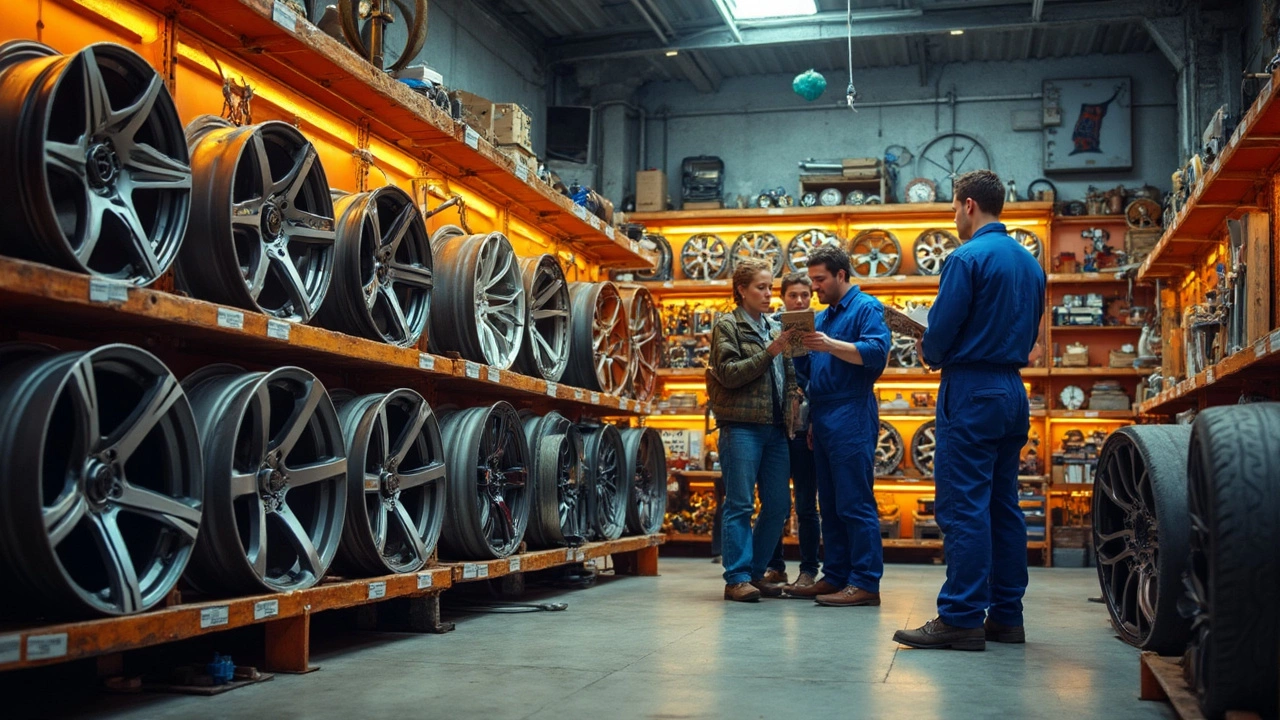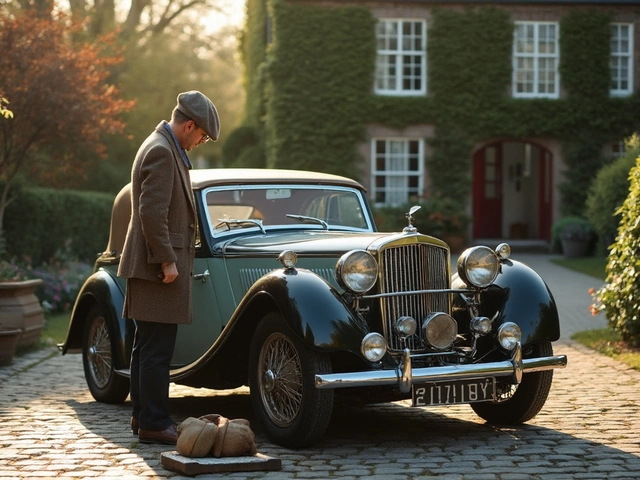Sticker shock. It hits a lot of folks the first time they check out prices for a set of alloy wheels. It feels like you need a second paycheck just for your car, but is that really true? Let’s get one thing straight: not all alloy wheels will drain your wallet, but it’s easy to get caught up in flashy brands and end up paying more than you need.
If you’re just thinking about swapping your old steel wheels for something sportier or lighter, you’ll notice prices jump all over the place. There are basic alloy wheels for average cars, but some wheels cost as much as a used car itself. Why? You’re not just paying for the metal—design, brand, size, and the way these wheels are made play a huge part in the price tag.
Here's the thing that trips up a lot of people: two wheels that look almost the same can be a world apart in cost. Sometimes it’s about what’s under the finish or how much work went into cutting down the weight. Not every driver needs the most expensive set, but nobody wants to end up with something flimsy, either.
- What Makes Alloy Wheels Costly?
- Price Ranges & What Affects Them
- Are They Worth the Money?
- Ways to Save on Alloy Wheels
What Makes Alloy Wheels Costly?
When you look at the price tag for alloy wheels, you’re not just paying for a hunk of metal. There’s a lot going on under the surface that explains why some of these wheels really rack up the bill.
First off, the material itself. Alloys are usually made from a mix of aluminum and other metals like magnesium. Aluminum isn’t as cheap as steel, and it takes more effort to turn it into a strong, lightweight wheel. That mix is what makes these wheels both light and tough, but it comes at a cost.
The way alloy wheels are made also plays a huge part. There are a couple of main methods: casting (pouring molten metal into a mold) and forging (shaping the alloy under high pressure). Forged wheels are stronger and lighter, but they take way more time and equipment to produce, making them a lot pricier than basic cast wheels.
Design complexity adds more money to the bill, too. Intricate designs need more tooling, higher-precision machines, and a lot more time. A plain five-spoke wheel costs a lot less than some custom, multi-spoke masterpiece.
Then you’ve got the brand name factor. Popular brands can charge more because they have a reputation for quality and reliability. People often pay extra for peace of mind, like knowing your wheels won’t fall apart if you hit a pothole.
Finishing and coatings matter as well. Better protection from the elements—think salt or rain—means extra steps to coat or paint the wheels. Rust resistance and nice paint jobs push up the cost but also mean your wheels look good for longer.
- Alloy wheels also need to pass strict safety tests, especially for high-end vehicles. That means more research, better manufacturing controls, and higher quality checks, all of which add to the price.
- Shipping isn’t cheap for big, heavy things like wheels. Getting them from the factory to your local shop can tack on a surprising amount, especially if you're chasing a set that’s made overseas.
Put it all together and it’s easy to see why alloy wheel prices can spiral. But knowing what actually drives up the cost helps you pick the right set without overpaying just for a fancy logo or a shiny finish.
Price Ranges & What Affects Them
So, how much do alloy wheels really cost? The prices can swing a lot depending on what you want. For example, if you're looking for standard 16-inch alloy wheels, you can find sets starting around $400 to $600 for common brands. Jump up to bigger wheels or trendier names, and you might be staring at $2,000, $3,000, or even steeper prices for a premium set. The highest-end custom alloys can top $10,000, but that’s way beyond what most folks need.
The main stuff that cranks up the price includes:
- Brand: Just like with sneakers or watches, famous brands cost more even if the quality is similar to regular brands.
- Size: Bigger wheels use more material. If you’re riding on 20-inch wheels or higher, expect a much bigger bill.
- Design: Simple looks are cheaper. Intricate styles and polishing mean more money out of your pocket.
- Material and Method: Forged alloys are lighter and stronger than cast ones, but they cost a whole lot more to make.
- Finish: Matte, chrome, or custom colors hike up the cost fast.
It’s easy to wonder where your money’s going, so here’s a quick look at real-world price ranges for new alloy wheels in 2025:
| Wheel Size | Budget ($/set of 4) | Mid-Range ($/set of 4) | Premium ($/set of 4) |
|---|---|---|---|
| 15-16 inch | 400-700 | 800-1,200 | 1,500+ |
| 17-18 inch | 600-1,000 | 1,200-2,000 | 2,500+ |
| 19-20 inch | 900-1,600 | 1,700-3,200 | 3,500+ |
On top of the wheels themselves, don’t forget about extras like lug nuts, center caps, or even shipping, which can sneak onto your bill. Oh, and a lot of shops charge $20 to $40 per wheel just to mount and balance them, so tack that on when you’re budgeting.

Are They Worth the Money?
So, should you fork out real cash for alloy wheels? Honestly, it depends on what you care about—looks, performance, or maybe just bragging rights down at the local coffee spot. But let’s not skate around: paying more doesn’t always mean you’re getting the best value for your ride.
Here’s what you really get for your money. First, alloys are usually lighter than old-school steel wheels. That means better handling and a slight bump in fuel efficiency, especially over time. Your car feels more responsive in corners, too, which is something you’ll notice even if you’re not a race car driver.
There’s also the looks factor. Alloy wheels seriously change up your car’s vibe. You can pick finishes, shapes, and sizes to make your ride stand out. For some folks, that alone makes the price feel justified.
On the flip side, alloys aren’t magic. They can crack or chip in pothole country, especially the super-low profile ones. If you’re worried about everyday curb dings, think twice before dropping big money. To put things in perspective, here’s a quick side-by-side of what you’re actually paying for:
| Alloy Wheels | Steel Wheels |
|---|---|
| Lighter weight (improves handling & fuel use) | Heavier (usually less sporty) |
| Custom looks and more size options | Basic appearance, few styles |
| Can be more expensive to fix or replace | Cheaper to repair if you bend them |
| Better at dealing with heat from brakes | Holds heat, less ideal for spirited driving |
Here’s a tip: if your main goal is to make your car safer or more efficient, the upgrade is more noticeable if you’re switching from very basic steel wheels. If it's just about style, set a budget before shopping, because shiny finishes and designer brands can get pricey fast.
In the end, the real question is this: does spending extra on alloy wheels matter enough for your daily driving? If you want a blend of style, small performance perks, and better resale value down the line, they’re worth it. But if you just need something to roll from point A to B, plain steel does the trick for way less cash.
Ways to Save on Alloy Wheels
Don’t want to empty your bank account for a set of stylish wheels? You’ve got options. Here’s how people get a sweet deal without sacrificing quality:
- Buy secondhand or refurbished: There are thousands of used alloy wheels out there, especially online. Many look good as new and cost way less than buying fresh out of the box. Facebook Marketplace, Craigslist, and specialist wheel shops regularly post bargains. Just make sure there’s no hidden damage.
- Look for seasonal promotions: Retailers and car shops have sales after new styles drop each year. Late winter and late summer often see discounts as stores clear out last year’s inventory.
- Consider less popular brands: You don’t always need those big-name brands to get quality. Lots of underrated brands offer great strength and style for a chunk less.
- Stick close to stock sizes: The bigger and wider you go, the pricier it gets. Upgrading to a reasonable size (16- to 18-inch) is usually way cheaper than huge 20-inch or 22-inch wheels.
- Buy complete sets: Ordering a full set of four can get you a bundle price, which is almost always cheaper than buying singles.
Here’s a look at what you might pay for alloy wheels depending on where you buy and whether you get new or used:
| Type | Low-End ($) | High-End ($) |
|---|---|---|
| New (Per Wheel) | 90 | 600+ |
| Used/Refurbished (Per Wheel) | 40 | 250 |
One extra tip—don’t forget to factor in installation, tires, and sensors. Sometimes shops roll those into a package if you negotiate or buy everything at once.
Want to keep them looking sharp for the long haul? Avoid curb rash and potholes, and wash them regularly. That way, you won’t have to replace your wheels any time soon, which is the biggest money saver of all.


